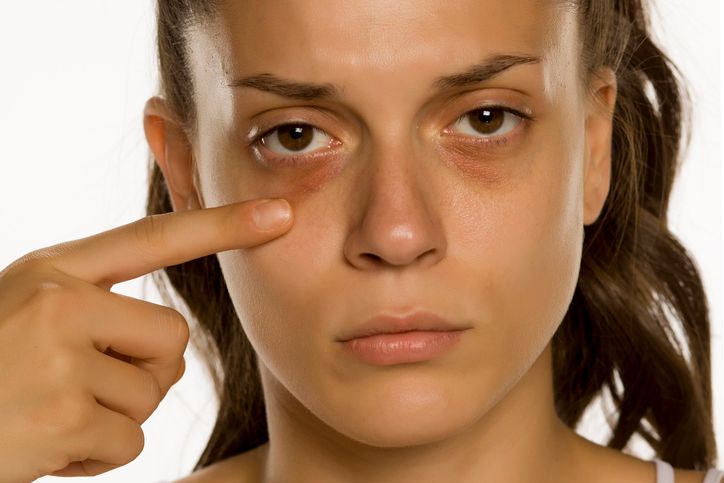
Book Now to Experience
S6 Body Sculpting Treatment
1 Minute Self-Registration
Date should not be before minimal date
Author: Natalie Ng|Updated: 4 June 2024
Have you ever been grocery shopping and found yourself reading the nutritional value table that was printed on the box of the food you were purchasing? Have you taken note that there is a calorie count displayed on the table that corresponds to the portion size of the food? What else can we do with the calorie information other than use it to determine the number of calories contained in the food that we are eating? Incorporating calorie counting or creating a calorie deficit for daily use into your weight management plan in order to regulate the quantity of food intake is one of the strategies to accomplish a sustainable weight loss and achieved through the practice of healthy eating. Either ingesting a sufficient number of calories or consuming fewer calories will contribute to the achievement of a healthy weight loss and will avoid the occurrence of any weight gain. A person can have a calorie deficit by not ingesting as many calories a day or week as they require to keep their body weight stable or achieving a goal weight. Calorie reduction may, over time, result in actual weight loss. Calories are the units of measurement that are used to determine how much energy is derived from food that we eat. If you have a calorie deficit of 500 per day, you should be able to successfully lose weight without feeling hungry or suffering significant exhaustion. However, one should bear in mind that not everyone should follow the same caloric deficit and caloric intake due to factors of age, gender, weight and height. Avoiding sugar and processed meals, in addition to engaging in regular physical activity or exercising regularly, will assist to create a calorie deficit that helps in losing weight.

1
Losing Weight With Calorie Deficit



2
What is Calorie Deficit?

A person has a calorie deficit when the number of calories they take in on a daily basis is less than the number of calories burned in the same time period. In order for the body to carry out all of its activities on a daily basis, it has to burn a particular quantity of calories. Eating fewer calories than your body requires will allow your body to burn the calories you have already stored as a source of energy (body fat) in order to meet its demands. It can be used by your body as an alternative to deriving its energy from the food you eat. You will experience weight loss if your body converts fat into usable energy. Because of this, you'll find that your weight decreases. For example, if you burn 2,000 calories today but only consume 1,800, you will have a calorie deficit equal to 200 calories.
However, the number of calories that a person requires on a daily basis will change depending on factors unique to their body, including current weight, height, gender, age, level of physical activity, and even body composition.

3
Three Components of Energy Expenditure

As you give your body fewer calories than it needs to maintain these three aspects of calorie expenditure, you indirectly create a calorie deficit. Calories are units of energy, and when you burn them or expend them during the day, they are referred to as your total daily energy expenditure of calories. When this behaviour is maintained over extended periods of time, it leads to a reduction in body weight. On the other hand, if you consistently give your body high calorie foods or extra calories than your body needs to sustain these tasks, it will result in you gaining weight. This type of situation is referred to as a calorie surplus. These are the three components of energy expenditure:
1. Resting energy expenditure (REE): the number of calories burned by your body while it is at rest to perform vital processes such as breathing and blood circulation. 2. Thermic effect of food: the calories that are burned as a result of your body breaking down, absorbing, and metabolising meals. 3. Activity energy expenditure: refers to the number of calories burned through physical activities such as exercise as well as activities that are not directly related to exercise such as fidgeting and doing tasks around the house.


4
How To Calculate Calorie Needs

In order to calculate your own personal calorie needs, you can either calculate daily calorie manually or by using any online calculator.
People who have a moderately active lifestyle can manually calculate their calorie intake by multiplying their current body weight by 15, which will give how many calories they need each day. Then, to calculate how many calories they should consume for a calorie deficit that is conducive to good health, they can take that amount and subtract around 500 calories from it. On the other hand, individuals ought to watch their calorie intake to make sure they do not take too few calories. It is also essential to keep in mind that physical activity has the potential to contribute to a calorie deficit.
Other than that, a calculation using their basal metabolic rate (BMR) and activity levels is also good to determine their daily calorie needs. This is the formula for counting calories by BMR:
men: 88.362 + (13.397 x weight in kg) + (4.799 x height in cm) - (5.677 x age in years) = BMR women: 447.593 + (9.247 x weight in kg) + (3.098 x height in cm) - (4.330 x age in years) = BMR
When a person knows their BMR, they can choose which of the following equations to apply to calculate their calorie requirements, depending on the amount of activity they get:
- sedentary: little or no exercise = BMR x 1.2 - minimally active: 1-3 days per week of exercise or activity = BMR x 1.375 - moderately active: 3-5 days per week of moderate activity or sports = BMR x 1.55 - very active: 6-7 days per week of hard exercise = BMR x 1.725 - extra active: athletes who usually train twice per day = BMR x 1.9

Book Now to Experience
S6 Body Sculpting Treatment
1 Minute Self-Registration
Date should not be before minimal date

5
Create a Calorie Deficit to Lose Weight

Diet
Altering what a person eats and drinks on a daily basis is one of the steps involved in producing a calorie deficit in the body and is one of the factors affecting weight loss. It is important for a person to focus on eating foods that are dense in nutrients but low in calories.
According to the Dietary Guidelines for Americans 2020–2025, the following are examples of foods that should be included in a healthy eating pattern that also has fewer calories such as vegetables, whole grains, lean proteins, low fat dairy and healthy oils. One should also avoid consuming sugary drinks and trans fats in their calorie intake. A food journal is recommended to jot down any calorie intake for daily deficit and at the same time keeping track of your calorie deficits.
Exercise
Exercising regularly is an essential component of successful weight loss. A person who does absolutely no physical activity whatsoever ought to make every effort, provided they are able to do so, to raise the amount of daily activity they engage in. This can include actions such as muscle strengthening activities, walking or jogging, biking and even doing light yard work. One should also check on trusted physical activity guidelines so that they are able to understand how to function properly by exercising to lose weight or increase muscle mass for body strength. Calorie deficit occurs when you are more physically active, helping to increase the number of calories needed which can make calorie burn to lose weight easier. Dana Ellis Hunnes, A senior dietitian at UCLA Medical Center claims that you will have a calorie deficit if the number of calories your body burns through exercise is greater than the number of calories it takes in during the day.
Other Things to Consider while Calorie Deficit
You should be able to anticipate weight loss that is linear and constant if you create a calorie deficit based on numbers such as 3,500 calories per pound. On the other hand, given the complexity of the human body, losing weight does not often occur in a linear method.
Researchers explain in an article that was published in the International Journal of Obesity that the concept of a deficit of 3,500 calories resulting in the loss of one pound of fat "grossly overestimates actual weight loss." The article was written by the researchers at the University of South Florida.
Other than that, although it is true that cutting calories is one of the several factors that contribute to weight loss, it is recommended that one should not overly cut calories in their deficit as it may be counterproductive and may be harmful for you.


6
Alternatives to Lose Weight

When it comes to not knowing the calorie content of a particular food that we eat or simply not having the time to log into our calorie counter app, calculating how many calories we consume in a day can be very taxing and confusing. This is especially true when it comes to determining how many calories are in a day. Because our days are getting busier and busier, we have had so little time to spend on ourselves, let alone keeping track of what we eat during the day, and there have been occasions when we have completely forgotten to do so. Calculating how much weight you need to lose and other specifics for a calorie deficit is already difficult for most people; it is even more difficult to determine your personal maintenance calories for your daily consumption on top of that.
Do you know that there is an additional straightforward and expedient method for you to lose weight, in addition to maintaining your self-discipline by keeping track of the food you eat on a daily basis to create a calorie deficit and engaging in a small number of physical activities for weight loss?

7
S6 Body Sculpting Treatment

You either don't have the time to keep track of the calorie content of the meals that you consume, or you forget to do so periodically. Or do you find that you simply do not have the time to sit down and enjoy a meal or to get in a nice workout session? You needn't worry about a thing! The S6 Body Sculpting therapy that we offer can still help you achieve your weight loss goals. Because we believe that a method that is safer and more comfortable (yet still quick!) is the ideal method for those of us who have a limited amount of time but still want to lose weight, there is no risk involved for you in receiving this treatment; in fact, it is completely risk-free and does not involve any sort of invasive procedure.
This is a placeholderaAfter a complimentary consultation with our cosmetic therapist, the treatment itself is quite straightforward and easy to do. The process of treatment will soon begin. The therapist will put the treatment equipment over the area of fat that you want to reduce. This will cause the bio-laser energy to be released, which will then penetrate the skin and reach the fat layers that have gathered underneath the skin. Because the laser energy will only destroy the targeted fat cells to activate fatty acid catabolism to effectively dissolve the fat without interfering with your health or your physical body, there is no need to worry about it being invasive in any way, despite the fact that the word "laser" sounds scary.
In order to hasten the procedure, our knowledgeable therapist will utilise a pneumatic technology and massage the area in order to hasten the lymphatic draining, which in turn helps in the hastening of the removal of fat via lipid metabolism. Not only will the fat layer reduce, which will help you lose weight, but it will also help your skin tighten because there will be stimulation of collagen formation, which assists in tightening and firming the skin.


8
Conclusion

Discipline is an absolute necessity if you want to reach your desired body weight goals, and this is especially true when it comes to monitoring your food consumption while maintaining a calorie deficit. If done correctly in accordance with your personal BMR, eating a healthy diet that contains an adequate number of calories will assist you in losing weight.
With our service and therapy, we are happy to assist you in reaching the body weight objectives that you have set. Get in touch with us as soon as possible to set up your appointment and make a reservation.
FAQ
How many sessions do I need to take?
This treatment comprises 10 sessions. Though results are able to be seen after only one session, it is recommended to complete all sessions to achieve optimal results.
I have a packed schedule, will there be any downtime?
As this treatment is completely safe and non-invasive, there is no need for any downtime as there are no wounds to be healed. We assure you that our treatment does not have any surgery, injection or medication.
Can I continue doing calorie deficit while receiving this treatment?
Of course, you can! This treatment will not meddle with your appetite or your overall health, so if you prefer on continuing your calorie deficit plan, you may do so.

Book Now to Experience
S6 Body Sculpting Treatment
1 Minute Self-Registration
Date should not be before minimal date
Recommended Articles
COPYRIGHT©Perfect Laser Clinics 2025 ALL RIGHTS RESERVED



















